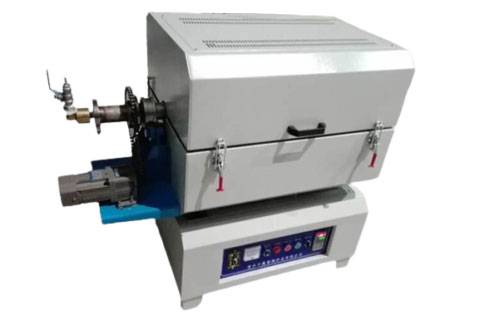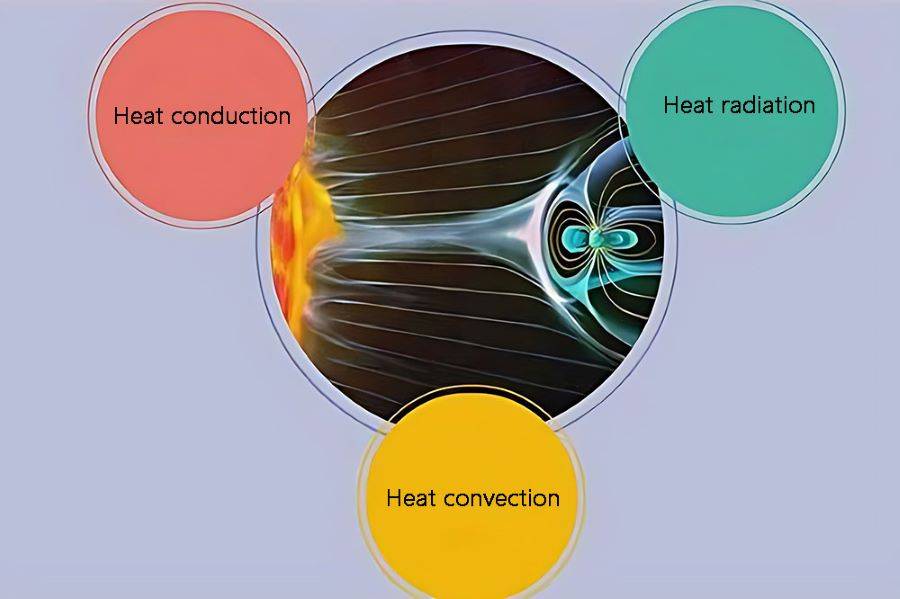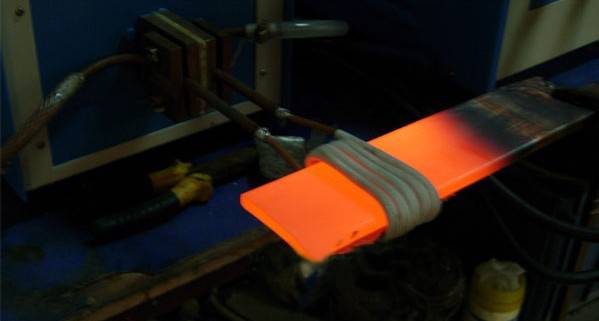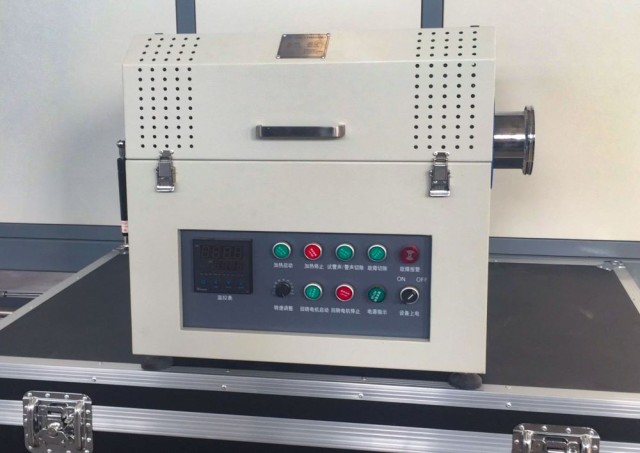Structure of Atmosphere Furnace
Components of Atmosphere Furnace
The atmosphere furnace is a sophisticated device designed for precise heating treatments in both laboratory and industrial environments. Its core components include the furnace chamber, electric heating elements, control system, and exhaust gas treatment system. Each of these components plays a vital role in maintaining the integrity and effectiveness of the heat treatment process.
The furnace chamber is the heart of the system, where materials undergo heating. Constructed from high-temperature-resistant materials such as refractory bricks or ceramics, the chamber is engineered to withstand extreme temperatures while ensuring excellent insulation. This design allows for consistent and controlled heating, preventing any unintended thermal fluctuations.
Electric heating elements are strategically placed within the chamber to generate the necessary heat. These elements are crucial for distributing heat evenly across the material, ensuring uniform treatment. The choice of heating elements often depends on the specific requirements of the material being treated, such as temperature range and heating rate.
The control system is integral to the operation of the atmosphere furnace. It comprises a temperature controller and an atmosphere regulator. The temperature controller manages the heating temperature, adjusting parameters to maintain stability. Simultaneously, the atmosphere regulator controls the composition and pressure of the furnace atmosphere, offering options such as inert gas, hydrogen, and redox atmospheres. This dual control ensures that the environment within the furnace is precisely tailored to prevent oxidation, decarburization, or other undesirable reactions.
Lastly, the exhaust gas treatment system is essential for maintaining a clean and safe working environment. It effectively manages the gases generated during the heating process, ensuring that no harmful emissions escape into the surroundings. This system is particularly important in industrial settings where compliance with environmental regulations is paramount.
In summary, the atmosphere furnace is a complex yet highly effective tool for heat treatment, leveraging its key components to create a controlled and efficient heating environment.

Atmosphere Control System
The atmosphere control system is a critical component of the atmosphere rotary oven furnace, ensuring precise environmental conditions within the furnace chamber. This system is composed of two primary elements: the temperature controller and the atmosphere regulator.
The temperature controller plays a pivotal role in maintaining the desired heating temperature within the furnace. It continuously monitors and adjusts various parameters to ensure stability and uniformity in the heating process. This is crucial for preventing thermal gradients that could adversely affect the quality of the materials being treated.
The atmosphere regulator is equally essential, as it manages the composition and pressure of the furnace atmosphere. This regulator offers a range of options, including inert gas, hydrogen, and redox atmospheres, each tailored to specific material processing needs. For instance, an inert gas atmosphere can prevent oxidation, while a hydrogen atmosphere is ideal for reducing metal oxides. The redox atmosphere, which balances oxidation and reduction reactions, is particularly useful for achieving precise surface chemistry in materials.
By combining these two elements, the atmosphere control system provides a versatile and highly controlled environment, optimizing the heating treatment process for a variety of materials.
Heating Principle of Atmosphere Furnace
Heat Generation and Transfer
The heating principle of an atmosphere rotary oven furnace primarily relies on electric heating elements to generate heat. These elements are strategically placed within the furnace chamber to ensure that the generated heat is efficiently transferred to the object being heated. The heat transfer mechanism operates through a combination of radiation and convection. Radiation involves the direct transfer of heat energy in the form of electromagnetic waves, while convection involves the movement of heated air within the chamber, carrying heat to the object.
To maintain the integrity of the materials being processed, the atmosphere within the furnace is meticulously controlled. This control system adjusts the composition and pressure of the furnace atmosphere, offering options such as inert gas, hydrogen, and redox atmospheres. By carefully managing the atmosphere, the furnace minimizes oxidation and deterioration of materials, ensuring that the heating process does not adversely affect the quality of the final product.

The combination of precise heat generation and effective heat transfer, along with a controlled atmosphere, allows the atmosphere rotary oven furnace to achieve uniform heating, high thermal efficiency, and stable material quality. This makes it an ideal choice for various industrial and laboratory applications, particularly in the heat treatment of metals, ceramics, glass, and other materials.
| Heat Transfer Mechanism | Description |
|---|---|
| Radiation | Direct transfer of heat energy via electromagnetic waves. |
| Convection | Movement of heated air within the chamber, carrying heat to the object. |
The atmosphere control system, which includes both a temperature controller and an atmosphere regulator, plays a crucial role in this process. The temperature controller manages the heating temperature and adjusts parameters to ensure stability, while the atmosphere regulator ensures that the furnace atmosphere is optimized for the specific materials being processed. This dual control system not only enhances the efficiency of the heating process but also safeguards the integrity of the materials, making the atmosphere rotary oven furnace a versatile and reliable tool in various industrial settings.
Applications and Advantages of Atmosphere Furnace
Scope of Applications
Atmosphere furnaces are versatile tools in the realm of heat treatment, finding extensive use in the processing of various materials, particularly metals, ceramics, glass, and composites. These furnaces are indispensable in both manufacturing and research settings, where precise control over the heating environment is crucial for achieving desired material properties.
In the manufacturing sector, atmosphere furnaces are employed for a wide array of processes, including annealing, hardening, sintering, and brazing. For instance, in the production of high-quality steel, these furnaces ensure uniform heating and cooling, thereby enhancing the mechanical properties of the final product. Similarly, in the ceramic industry, atmosphere furnaces are used for firing and glazing, where maintaining a controlled atmosphere helps in achieving the desired color, texture, and durability.
In research laboratories, these furnaces play a pivotal role in material science studies. They enable scientists to conduct experiments under controlled atmospheres, allowing for the observation of material behavior under different conditions. This is particularly important in the development of new materials, where understanding the effects of temperature and atmosphere on material properties is essential.
Moreover, the adaptability of atmosphere furnaces to various types of materials makes them a preferred choice in specialized industries such as aerospace and electronics. In these sectors, the ability to process materials without oxidation or contamination is paramount, and atmosphere furnaces provide the necessary precision and control.
In summary, the scope of applications for atmosphere furnaces is broad and varied, encompassing a wide range of industries and research fields. Their ability to provide controlled heating environments makes them an invaluable tool for both production and scientific inquiry.
Advantages Over Traditional Equipment
The atmosphere furnace stands out from traditional equipment in several key ways, offering significant improvements in thermal efficiency, heating uniformity, and material stability during the heating process. These advantages make it a superior choice for various industrial and laboratory applications.
One of the most notable benefits is its high thermal efficiency. Unlike traditional furnaces that may lose heat through inefficient insulation or poor heat distribution, the atmosphere furnace is designed to maximize heat retention and transfer. This is achieved through advanced insulation materials and precise temperature control systems, which ensure that the energy used for heating is effectively utilized, reducing waste and operational costs.

Uniform heating is another critical advantage. The atmosphere furnace employs sophisticated heating elements and atmosphere control systems that distribute heat evenly throughout the furnace chamber. This uniformity prevents hot spots and cold spots, which can lead to inconsistencies in material properties. By maintaining a consistent temperature across the entire heating zone, the atmosphere furnace ensures that every part of the material undergoes the same thermal treatment, resulting in higher quality and more reliable end products.
Moreover, the atmosphere furnace excels in maintaining stable material quality during the heating process. The controlled atmosphere within the furnace, which can be adjusted to include inert gases, hydrogen, or redox environments, minimizes oxidation and other chemical reactions that can degrade materials. This controlled environment protects the material from unwanted changes, ensuring that the final product retains its desired properties.
In summary, the atmosphere furnace offers substantial benefits over traditional equipment, including high thermal efficiency, uniform heating, and stable material quality. These advantages make it an invaluable tool for industries requiring precise and reliable heat treatment processes.
Working Principle of Atmosphere Rotary Furnace
Main Working Principle
The atmosphere rotary furnace operates by subjecting materials to a high-temperature and high-pressure atmosphere environment, which induces significant changes in the material during the heating process. This method leverages the controlled environment to facilitate precise transformations in the material's properties. The furnace is particularly versatile, capable of processing a wide array of powder materials, making it a flexible tool in various industrial and laboratory settings.
In this high-temperature and high-pressure environment, the furnace not only heats the materials but also ensures that the atmosphere within the chamber is carefully regulated. This regulation minimizes oxidation and other forms of deterioration, preserving the integrity and quality of the materials being processed. The atmosphere control system, which includes a temperature controller and an atmosphere regulator, plays a crucial role in maintaining the desired conditions within the furnace.
The flexibility of the atmosphere rotary furnace is further enhanced by its ability to accommodate different types of powder materials. Whether it's metals, ceramics, or other specialized materials, the furnace can be adjusted to meet the specific requirements of each material type. This adaptability ensures that the furnace can be used in a variety of applications, from basic material processing to advanced research and development.
Moreover, the high-temperature and high-pressure conditions within the furnace promote uniform heating, which is essential for achieving consistent results. This uniformity is achieved through the even distribution of heat generated by electric heating elements, which transfer heat to the materials primarily through radiation and convection. The result is a controlled and efficient heating process that enhances the overall quality and performance of the processed materials.
Key Structural Components
The main structure of an atmosphere rotary furnace comprises several critical components, each designed to ensure efficient and precise heating processes. These components include the furnace body, sliding bottom inner furnace, rotating mechanical parts, atmosphere heating system, atmosphere circulating system, and furnace after-treatment system.
The furnace body is the core of the system, typically constructed from high-strength steel. It is coated with high-temperature and corrosion-resistant materials to withstand the rigorous conditions inside the furnace. This robust design ensures that the furnace body can maintain structural integrity and prevent any degradation over extended periods of operation.
The sliding bottom inner furnace is another essential component, facilitating the smooth movement of materials within the furnace. This design allows for even heat distribution and ensures that the materials undergo consistent treatment throughout the heating process. The sliding mechanism is engineered to handle the thermal expansion and contraction of materials, thereby preventing any potential damage to the furnace structure.
Rotating mechanical parts are crucial for the continuous movement of materials inside the furnace. These parts are designed to provide a steady and controlled rotation, ensuring that every part of the material is exposed to the heating elements uniformly. The rotation also helps in the even distribution of the atmosphere within the furnace, enhancing the overall efficiency of the heating process.
The atmosphere heating system is responsible for maintaining the desired temperature inside the furnace. This system includes advanced heating elements that can generate and sustain high temperatures, ensuring that the materials reach the required processing conditions. The heating system is integrated with a sophisticated control mechanism to adjust the temperature parameters dynamically, ensuring stability and precision.
The atmosphere circulating system plays a pivotal role in controlling the composition and pressure of the furnace atmosphere. This system provides options for different atmospheres, such as inert gas, hydrogen, and redox atmospheres, depending on the specific requirements of the materials being processed. The circulation system ensures that the atmosphere remains consistent throughout the furnace, preventing any oxidation or deterioration of the materials.
Finally, the furnace after-treatment system is designed to manage the post-heating processes, including cooling and exhaust gas treatment. This system ensures that the materials are safely cooled down after the heating process and that any exhaust gases are treated to meet environmental standards. The after-treatment system is crucial for maintaining the quality and safety of the materials and the operating environment.
Each of these components is meticulously designed and integrated to ensure that the atmosphere rotary furnace operates efficiently and effectively, providing consistent and high-quality results in material processing.

Characteristics of Atmosphere Rotary Furnace
Material and Design Features
The furnace chamber in an atmosphere rotary oven furnace is crafted from imported alumina polycrystalline fiber materials, which are renowned for their exceptional heat insulation properties. These materials not only ensure that the chamber maintains a consistent temperature but also provide high tensile strength, making the furnace robust and durable. The use of these advanced materials significantly enhances the energy efficiency of the furnace, contributing to substantial energy savings during operation.
The heating elements within the furnace are engineered to withstand high temperatures, ensuring they can handle large thermal loads without compromising performance. These high-temperature heating elements are designed for longevity, minimizing the need for frequent replacements and reducing maintenance costs. The combination of these advanced materials and robust heating elements ensures that the atmosphere rotary furnace can deliver consistent and reliable performance over extended periods.
Operational and Safety Features
The atmosphere rotary oven furnace is equipped with a suite of advanced operational and safety features designed to enhance both performance and security. One of the standout features is its high-temperature control accuracy, which ensures precise temperature management, crucial for maintaining consistent material properties during processing. This precision is achieved through sophisticated control systems that continuously monitor and adjust temperature parameters.
The furnace boasts an integrated structure that not only simplifies maintenance but also enhances durability. This design includes a double-layer shell with air circulation heat insulation, which effectively reduces heat loss and maintains a stable internal temperature environment. This feature is particularly beneficial for energy efficiency and consistent heating performance.
Safety is paramount, and the furnace is equipped with electronic components featuring leakage protection. This ensures that any electrical anomalies are swiftly detected and addressed, preventing potential hazards. Additionally, the furnace includes an over-temperature alarm system that triggers alerts when temperatures exceed safe levels, allowing for immediate corrective action.
For automation and ease of operation, the furnace offers programmable operation. This feature allows users to set and monitor various operational parameters remotely, enhancing both efficiency and control. Programmable operation also facilitates batch processing, making it ideal for industrial applications where consistency and speed are critical.
In summary, the operational and safety features of the atmosphere rotary oven furnace are meticulously designed to provide precise control, energy efficiency, and robust safety measures, making it a reliable choice for various heating applications.
Related Products
- Vacuum Sealed Continuous Working Rotary Tube Furnace Rotating Tube Furnace
- Rotary Tube Furnace Split Multi Heating Zone Rotating Tube Furnace
- Laboratory Vacuum Tilt Rotary Tube Furnace Rotating Tube Furnace
- 1400℃ Controlled Atmosphere Furnace with Nitrogen and Inert Atmosphere
- 1200℃ Controlled Atmosphere Furnace Nitrogen Inert Atmosphere Furnace





















